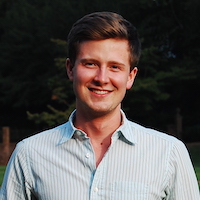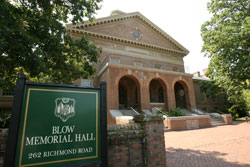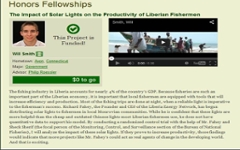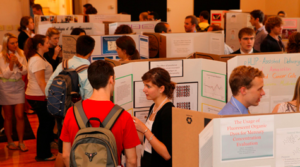LIBERAL ARTS, PROGRAMMING INTERSECT WITH DATA SCIENCE PROGRAM
Published: October 6th, 2017 – Written By: Grace Murray
On Wednesday, Sept. 21, students gathered for an information session regarding William & Mary’s new interdisciplinary data science program, currently offering a minor and a template for a self-designed major. Professor Dan Runfola acts as director of the data science program and led the session.
The data science program has been in the works for over three years. Born from the need to prepare liberal arts focused students for an increasingly quantitative world, faculty members envision the program as “coding for non-coders”.
“A lot of the reason that data science came to be is because a group of faculty members doing fairly computational research realized that it was hard to find students with the appropriate training to work in our labs,” Runfola said. “Trying to bridge the gap as such, built into the data science program is an opportunity to engage in a lab. You can talk to them to design a major/minor that will help you get into their lab.”
The data science major is currently still an interdisciplinary major. This is a large advantage, however, as it allows students to emphasize data science in the context of their preferred future field. The major is designed to pair with any other substantive area. Whether government, business or psychology focused, students can focus their research and their credits into a field that matters to them.
“Data science is kind of a buzzword right now,” sophomore Asanah Teneng said. “That’s the way the world is going as far as science is concerned. That’s why I am kind of like ‘let me try it and see how it goes’.”
In addition to learning programming, students will focus heavily on the ethics and morals of the data world. As algorithms control aspects of life ranging from data apps to military tactics, data science majors will learn how to balance programming skills with analytical applications. Ideally this will give graduates access into a job sphere in which they can not only understand data, but use it to humanity’s advantage.
“I am doubling with business analytics [and data science],” junior Lauren Hobbs said. “Sometimes people think they’re the same thing but I’ve found that it didn’t explore the quantitative side as much as I wanted it to and in order to do the computer science minor I’d need more classes than I need for the data science major. It just makes more sense for me and it looks more marketable.”
The “marketability” aspect of the data science major is a significant drawing point. Alongside hands-on research and a personalized course load, data science students will be more competitive for job opportunities that require skills both in analysis and programming. As more social sciences, and even the humanities, bring in quantitative analysis through programs such as Python, R, or even Stata, a background in data science can make one more competitive in a myriad of fields.
“We got a letter of support from USAID [United States Agency for International Development] telling us that we need more people that don’t just know how to program, but know how to program to solve problems,” Runfola said. “[People that] understand the limitations and advantages of algorithms and how people can lie and manipulate with numbers so we can avoid those types of pitfalls. It’s not the same as a computer scientist. You learn how to communicate with computer scientists to make sure that the code being written is ethically and critically the right code. There’s a big disconnect there.”
Although known for a focus in the liberal arts, the data science minor and self-designed major are part of a series of large strides on part of William & Mary to prepare students for a career in, and outside, the sciences. William & Mary offers significant research opportunities for undergraduates; the data science program only accentuates this already wide-ranging area offered to all.
“I know a lot of this stuff is going to be pretty important for going in a math or statistics area,” freshman Katie Munkascy said. “But really I’m just trying to explore what W&M has to offer. Also, a lot of the classes required for the data science major are also required for CAMS so I could double major.”
The official unveiling of the data science program represents years of efforts on the part of the William & Mary faculty and administration. This work has been done to further the research prospects of undergraduate students as well as those of the faculty. Years will show how the intersection of data analytics and the liberal arts foment academic achievements on campus and beyond.
For more information regarding the data science major, contact Professor Dan Runfola at danr@wm.edu or access the data science website.
SSRMC Lab Members Showcase Research, Results
Published: October 3rd, 2017 – Written by: Grace Murray
Throughout the week of Sept. 11, students of the SSRMC-affiliated labs presented findings in the annual Charles Center Summer Research Showcase. While most students left campus for adventures outside of the Williamsburg area, a large portion of SNaPP Lab and PPIR members conducted independent projects. Months of summer work culminated as research covering a breadth of government topics went on display.
Several SSRMC members received funding as Monroe Scholars. Sophomore PPIR member Nada Aljassar focused on global health public-private partnerships and challenges on the road towards sustainable healthcare.
“I think doing this research gave me perspective on how to think more big picture wise,” Aljassar said. “[Professor Holmes] gave a lot of supportive insight throughout the process.”
As many novice researchers can relate to, Aljassar changed her focus multiple times throughout the summer. The structure of her independent research paradigm afforded the freedom to shift perspective without severe consequences. Aljassar came to understand the time demanded by extensive statistical content evaluation and hopes to expand her project quantitatively. The vaccine alliance Gavi became the focus of her research and concluding paper. Ideally, an honors thesis lies down the road building upon the summer’s .
Senior SNaPP Lab member Michelle Hermes spent her summer on her honors thesis, her first deep foray into the realm of independent research. The thesis explores social trends within Germanic culture, specifically pertaining to lasting effects from the Holocaust.
“I liked the fact that I set my own pace in doing everything and I also really liked that I could let the project go where I wanted it to instead of having it be more structured,” Hermes said. “My plan is to have the data collection started by fall break. I’m not sure how long that’s going to run.”
Hermes intends to define “the Holocaust Complex.” Her thesis will examine lasting cultural compensation on the part of Germany for the events of the Holocaust. This societal reparation expresses itself in efforts to project an open, accepting, and liberal environment. Hermes hopes to uncover patterns within public opinion about immigration and refugee policy and aims to predict future changes.
PPIR member Casey Terrel also worked as a Monroe Scholar this summer, focusing on the effects of ISIL terrorism on the 2016 election. Terrel’s research was qualitatively focused on the root of terror attacks. This research laid the groundwork for a comprehensive understanding of the desire for an Islamic State and the violence inherent in its pursuance. Terrel found that Trump’s approach towards the “War on Terror” was a self-advantageous attempt to depict his future administration as strong and the outgoing administration as weak.
Terrel also analyzed the data he collected quantitatively, building a simple econometric model which showed that Trump would benefit from terror attacks. Looking towards the future, Terrel hopes to refine his quantitative measurements and expand his econometric model to analyze further possible impacts of terror attacks.
Also relating to the 2016 election, SNaPP lab member Dan Brown focused on the function of Facebook as a vehicle of polarization. Specifically, Brown gathered data throughout the fall of 2016 through the SSRMC’s Omnibus Project survey. The research showed that although a politicized Facebook post might not change an individual’s opinion of a politician, it can change an individual’s view of a political party.
“I really enjoyed the freedom to explore,” Brown said. “I had already collected the data during the school year so it was really nice to have the entire summer set aside to process the data, clean the data [and to] explore the questions and sub-questions that I wanted to look at. It was great to work outside of the pressures of classes. It was great to bring two years of work to a close.”
Brown started this independent project through the SNaPP Lab two years ago. His research focus aligns heavily with Professor Settle’s manuscript Frenemies: How Social Media Polarizes America which is currently under review. Settle’s assistance as an advisor helped Brown to understand a broader concept of political interplay on Facebook while still remaining objectively focused.
“Over the course of the entire two years I was surprised by the amount my project changed, from my original perception as I read the literature,” Brown said. “I realized my original idealistic ideas of what the relationship of Facebook [and users] might be weren’t really holding up, so I had to come up with a slightly more cynical look towards polarization.”
Junior Aidan Hennessey-Niland, a member of PPIR, focused on the dubious dealings between FIFA and governments across the globe.
“I really liked the freedom [research] gives you, it really gives you the opportunity to work on whatever your heart desires,” Aidan Hennessey-Niland said. “I’m a big sports fan…and so I looked at how governments try to negotiate with FIFA to host World Cups. Essentially, it’s even more corrupt that you would probably think.”
Hennessey-Niland had an especially turbulent research experience. The release of the “Garcia Report” in June revolutionized his methods. The report outlined extremely suspicious financial dealings between Australia and FIFA, and the UK and FIFA. This gave huge insight into governmental ramifications and was thrilling for Hennessey-Niland as it was unexpected but allowed for a wider breadth of research.
Lab members highlighted the importance of Professors Settle and Holmes throughout the research process. While all projects were independent, students met with their advisors throughout the summer to ensure success and clarity. Additionally, work completed in lab throughout the school year framed summer research.
“The Boot Camp aspect of SNaPP Lab definitely prepared me well to do the research design, which is still the stage I’m at in my honors project,” Hermes said. “The literature review work that we did and the ‘forming a hypothesis’ exercises really helped me in formulating the background of my project. I think that that’s a really solid part of it so far.”
Although summer is a still recent memory, this semester’s SSRMC research is well underway. As many of the research projects conducted this past summer develop as honors theses, check back on the SSRMC blog for updates throughout the semester.
To review blog posts from the researchers above and from other Charles Center projects, access the Charles Center Summer Research Blog, the Freshman Monroe Scholars Summer Research Blog, or W&M Honors Fellow blog.
SSRMC and SNaPP Lab alum John Stuart wins MPSA Award
Published: April 12, 2017 — Written By: Chris DeProspo
On Friday, April 7th, former SNaPP lab employee and Omnibus director for the SSRMC John Stuart received the award for Best Undergraduate Paper from the MPSA Caucus for LGBT Political Science for his presentation of his 2016 honor’s thesis, “Disgust: An Emotional Component of Conservative Attitudes Toward Transgender Individuals.”
The Midwest Political Science Association, or MPSA, hosts an annual conference that combines over 80 subsections of political science. One of the Association’s main goals is to foster interdisciplinary work and discussion, and Stuart’s thesis, which combines psychology and gender studies, is firmly rooted in interdisciplinary work. His award-winning thesis was made possible both through his hard work and the resources of the SSRMC and SNaPP lab.

Stuart was a veteran of Professor Settle’s Social Networks and Political Psychology lab, which consists of a number of students conducting research for their Honor Theses or for Summer Projects. Each social science lab encourages undergraduate research and the pursuit of honors theses. For more information, visit the news story on Honors Fellowships and the Charles Center website. As with Stuart’s work, SSRMC faculty will guide you every step of the way.
Measurement in the Social Sciences
Published: March 6, 2017 — Written By: Chris DeProspo
On February 9th, the SSRMC held a Measurement In the Social Sciences discussion panel, moderated by Professor Holmes. The panelists on the round table included Professor van der Veen, Professor Lombardini, Professor Settle, and our guest panelist: Professor Lilliana Mason, a visiting professor from University of Maryland. To begin the talk, Holmes asked each professor how he/she would define measurement in the social sciences, particularly as the concept pertains to democracy.
Professor van der Veen said that much of his work revolves around “fuzzy notions,” and he acknowledges both the difficulty and utility of measuring these concepts. His focus was on operationalization, defining and measuring a concept to force precision. He said operationalizing the term “democracy” is particularly difficult because people have so many conceptions of the word. For example, he pointed to various scores of Democracy in the Congo between the Economist, Polity IV, and Freedom House to emphasize discrepancies in the ratings based on what each organization values.
Professor Lombardini, a political theorist, says that the only thing political theorists measure are “the books they read.” Not actually, but he said they’re less focused on the empirical world than many of their peers. Rather, when defining the term “democracy,” he takes a normative approach, focusing on not what democracy is but what it ought to be. He talked about deliberative, agonistic, and epistemic democracy to focus on the differing standards set by each, and as a theorist, he wants to understand what institutions facilitate the development of these different forms.
While Professor Lombardini focuses on more abstract concepts, Professor Settle is interested in measuring how human and social behavior pertains to politics. Therefore, measurement for her is trying to most accurately capture what people are thinking or what their preferences are. Therefore, she said she got involved in experimental work because she wanted more control over how she could measure these preferences, especially since she relies on non-human measurements (such as physiological changes or genetic propensities) for her studies. Professor Settle studies American political behavior, and she’s interested in the processes behind political interactions. Professor Van Der Veen is also interested in why people do things, figuring out what they want them to achieve. Sure, measuring people in the lab is great, but he can’t measure a politician from the 1950s. Therefore, he has to focus on what people write, but that has limitations (for example, what if they lie?) And he said that when we only look at what people do, we just see patterns. We have to understand why.
Professor Lilliana Mason, our guest, also studies political behavior. She says the first thing she does in order to determine what a person is thinking is to turn a concept into a question that’s understood in the same way. She won’t ask someone if they’re authoritarian, but she might ask “is it important for children to be raised independently or under authority?” The most important thing for behaviorists like her is getting from a concept to a specific question that everyone understand. She says that it doesn’t help to ask “are we living in a democracy” because we have to get to a concrete level. When political behaviorists think of democracy, Mason said they think about large concepts like efficacy, like internal and external efficacy. Therefore, her concerns about operationalization mirror the focuses of her peers, even if their approaches are different.
In order to introduce an element of chaos to the debate, Professor Holmes asked, “well why bother looking in people’s heads at all? Do we actually care?” All the professors said we want to know, but for different reasons. Professor Settle said we don’t just care what people do, but they also want to understand why they do it. To contribute, researchers need to push beyond these surface levels of understanding. Professor Mason said that they have a number of psychological tools to get the information they might feel uncomfortable sharing. Professor Lombardini said “we want to know, but we might not be sure why they want to know.”
Since Professor Mason was our guest, we wanted the audience to learn more about her work and how it relates to measurement in the social sciences. She said a lot of her work is inducing anger and then asking questions to see how it influences their behavior. Furthermore, Mason stated she can induce “mortality salience” to make them think about death and how it influences politics, which is very relevant in the political sphere, and she said we should develop measures to rule out improbabilities.
Overall, the talk highlighted the nuance of social science disciplines and how one concept can mean vastly different things to each. However, the common thread between them- as evidenced by the scientists on our panel- is that each is supported by analytical thinkers and processes that facilitate such a debate. We thank Professor Mason for visiting and we welcome her back at any time.
The Charles Center and Honors Fellowships
Published: February 15, 2017 — Written By: Chris DeProspo
The Roy R. Charles Center for Academic Excellence, often referred to as the Charles Center, stands at the heart of William and Mary’s scholarship efforts. The Center offers a myriad of scholarships for undergraduate students of every academic pursuit, as well as a number of grants, such as funding from the Vice Provost and Reves center. The Charles Center offsets these scholarships through private donations and community-driven funding.

One such example of this crowd-driven funding is The William and Mary Honors Fellowships, which operates based on a two step process for awarding honors scholarships. Once an applicant receives approval from their academic department to conduct honors research, their research proposal is reviewed by a faculty committee. The faculty then deliberate and determine which projects should be accepted, based on the criteria of originality, ability to conduct independent work, and complexity of the project. Of the accepted, five particularly compelling applicants receive a Ted Dintersmith Fellowship, and the other applicants have the chance to have their projects funded by a collection of community-driven funds for Honors Fellowships. To donate to the community fund or find out more, visit this link. To view individual projects and donate to specific Fellows, rather than the general fund, visit here.

In order to learn more about the Honors Fellowships, I spoke with one recipient of the program, Alexander Williams. His research centers on the link between empathy and social learning, particularly what he identifies as “social fear learning.” In his research, he found that participants in his studies who self-reported their levels of fear were vastly different than their psychophysiological levels of fear. Since I cannot do justice to the amount of work he’s put into his research, please visit all of his updates on his research here.
He thought the process was straightforward, and like the other accepted fellows, he received donations from families and friends to reach his $6,000 goal. However, he said that he was in a somewhat unique situation from the other applicants, stating that he also received one of the $3,000 summer scholarships ( The Summer Undergraduate Research scholarship is aimed at all academic classes except for seniors. They also maintain an online blog to keep their followers updated on their research.) Williams said that the distribution of funding between direct donations and general funding varies by candidate, but between the Summer Fellowship and Honors Fellowship, he received ample funding from the Charles Center.

If one does not donate to a specific candidate but opts to donate to the fund instead, gifts are distributed to the different projects by the director of the Charles Center. As such, Williams stated that “the Charles Center has a system where they rank the applications and supplement the theses based on that.” He says that the funding from the Charles Center has helped him out a lot, and he encourages anyone else interested in Honors work to apply for grants from the Center. With that in mind, please visit the Honors planning page to keep track of all the upcoming deadlines for submitting research. Furthermore, the upcoming Honors Colloquium, which takes place between February 13th and 23rd, should give potential applicants an idea of what to look for in a successful Honors Fellowship.
To learn more about the Scholarships offered by the Charles Center, please visit the Scholarship Central, which provides an overview of these opportunities offered by the College. One such scholarship, aimed at all academic classes except for seniors, is the Summer Undergraduate Research scholarship. They also maintain an online blog to keep their followers updated on their research. Interested applicants of all academic fields should utilize the aggregate scholarship search engine, Furthermore, Lisa Grimes, Associate Director of the Charles Center and Director of Fellowships and Undergraduate Research, will be more than happy to answer any questions regarding searching and applying for scholarships. And since applications for Summer Research funding are due on February 28th, the time to start is now.